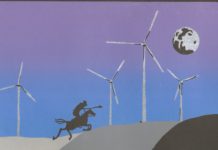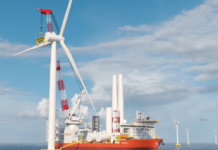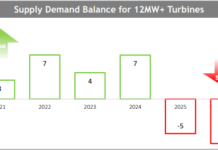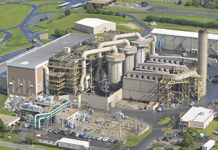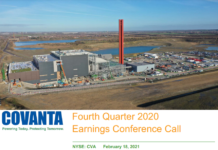Last week, Tom brought you a piece on the Algonquin Power Income Fund (AGQNF.PK), in which he opined that shift in investor attention away from capital gains toward yield might eventually provide a catalyst for the prices of yield-focused securities such as income trusts to rise. So-called utility trusts, or income trusts where the underlying corporation is engaged in utility activities such as power generation, are a common feature of the Canadian income trust sector (the mother of all income trust sectors). A sub-set of utility trusts is the clean power utility trust, where the power generation assets consist of technologies such as wind, small hydro, biomass and waste-to-energy (WtE). Though new tax rules have effectively made it impossible for new income trusts to be brought to market (barring certain exceptions such as REITs), existing clean power utility trusts (existing as of Oct. 31, 2006) get to operate under the old tax regime until 2011.
The clean power utility trust model is similar to the clean power Independent Power Producer (IPP, see definition) model, whereby firms are pure-play clean power generators (i.e. they own only generation assets) that sell their electricity to utilities, with the exception that the tax treatment awarded to income trusts allows them to pay higher yields by avoiding double taxation.
While changes in legislation mean that this investment vehicle is dying a slow death, Tom was correct to point out that in times where the prospects for strong capital gains are uncertain and interest rates low, income trusts provide a good way for investors to access high yields. What’s more, clean power utility trusts, this most unique of Canadian investment sub-sector, allow investors (including US investors) to play North American clean power in a way that does not entail a risky bet on a technology play but is rather much more akin to a utility investment.
Clean Power Utility Trusts
| Name | Ticker | Related Corp. Entity (Ticker) | Yield (%)* | Assets |
| Algonquin Power Income Fund | AGQNF.PK | N/A | 9.16 | Hydro, Cogen, WtE, Wind, Water/Wastewater |
| Boralex Power Income Fund | BLXJF.PK | Boralex (BRLXF.PK) | 19.77 | Biomass (wood residue), Hydro, Nat Gas Cogen |
| Macquarie Power & Infrastructure Income Fund | MCQPF.PK | N/A | 18.88 | Nat Gas Cogen, Wind, Biomass (wood residue), Hydro, Long-term Care Home |
| Innergex Power Income Fund | INRGF.PK | Innergex Renewable Energy (INGXF.PK) | 10.81 | Hydro, Wind |
| Northland Power Income Fund | NPIFF.PK | Northland Power (not public) | 9.44 | Nat Gas Cogen, Wind |
| Great Lakes Hydro Income Fund | GLHIF.PK | N/A | 8.01 | Hydro |
*As at close on Friday Jan. 9, 2008
One of the major risks facing income trusts is distribution cuts, something that generally happens when the fundamentals of the underlying business are severely diminished or distributions were set too high to begin with (in order to attract investors). As can be noted from the table, the yields on some of these trusts (i.e. Boralex Power Income Fund and Macquarie Power & Infrastructure Income Fund) appear to indicate that investors are anticipating distribution cuts and are demanding a risk premium. Yet preliminary screens on both funds don’t uncover much evidence that distribution cuts are in the cards (caveat: these were very preliminary screens).
While growth will be challenging as long as credit conditions remain tight (individual projects typically use over 50% debt), the underlying business model and existing assets of these funds remain largely immune from a slowing economy – they are utilities with a clean twist. Barring another major round of indiscriminate selling in equity markets, investments in one or more of the clean power utility trusts is a good way of generating returns in the form of cash yields (something that’s worth a lot more than the promise of future capital gains in this economic environment) from a comparatively low-risk sector.
Some of the things to look for as red flags in assessing these tr
usts are: liquidity position (cash on hand; quick ratio) and ability to borrow for emergency purposes (undrawn line of credit); leverage level (debt-to-capital ratio) and the need to roll over debt in the next 12 months; any signs that operating conditions have deteriorated (e.g. for wood biomass, indications that pulp/saw mill closures related to the bad economy are decreasing fuel supply).
DISCLOSURE: Charles Morand does not have a position in any of the securities discussed above.
DISCLAIMER: I am not a registered investment advisor. The information and trades that I provide here are for informational purposes only and are not a solicitation to buy or sell any of these securities. Investing involves substantial risk and you should evaluate your own risk levels before you make any investment. Past results are not an indication of future performance. Please take the time to read the full disclaimer here.

